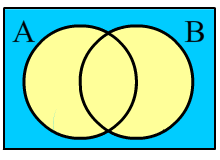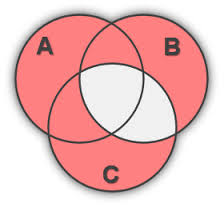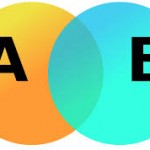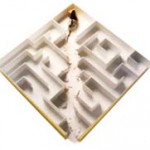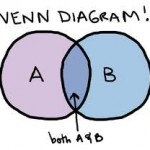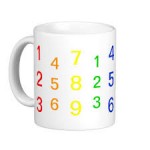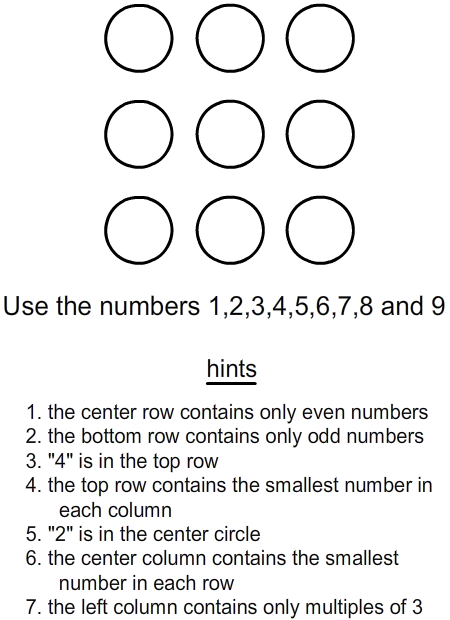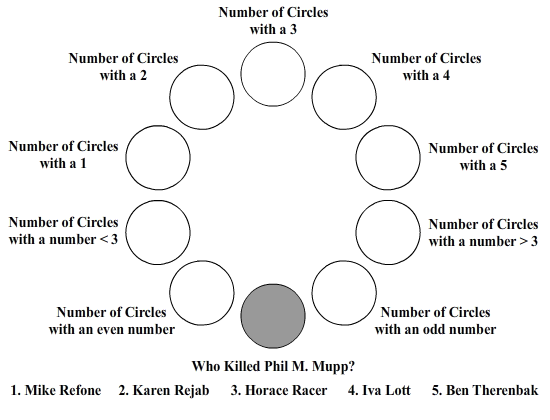Today’s Twister is a follow on to #14 and #15. Venn diagrams is again the theme, but this time you’re given a set and you have to select ALL of the areas of the Venn diagram to which it corresponds. There are two sets, A and B. Each displayed set is a combination of these two sets using Complement, Union or Intersection. It important to realize that one or more areas may be selected, by clicking in the desired area (selected areas are in orange). If you want to deselect an area, just click a selected orange area and it will return to it’s original color. Finally, the blue area can be selected – it corresponds to being outside of both sets A AND B.
Here’s a quick review of basic set concepts:
– the INTERSECTION of two sets is the area they have in common
– the UNION of two sets is their entire area
– the COMPLEMENT of a set is the area outside the set
In a two-set Venn diagram, there are four areas that can be selected.
1. the area outside of both sets A and B (the blue area)
2. the area in the middle (the “football shape” in both sets A and B)
3. the area in set A, but not in set B (the yellow moon shape on the left)
4. the area in set B, but not in set A (the yellow moon shape on the right)
When you have selected all of the areas for the set, select the Check button to check your solution. When successfully completed, a New Game button will appear so you can play again. You can always select the Reset button to reset the game to the start.
Good luck with the puzzles. Have fun and I hope they help you to better understand and master two set Venn diagrams!


